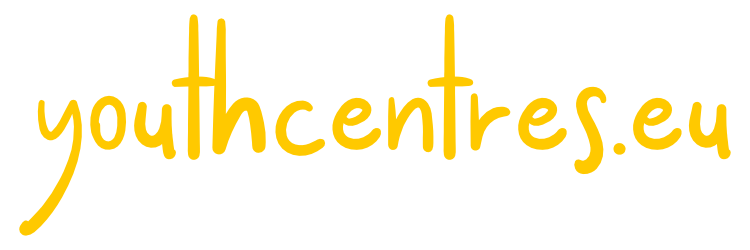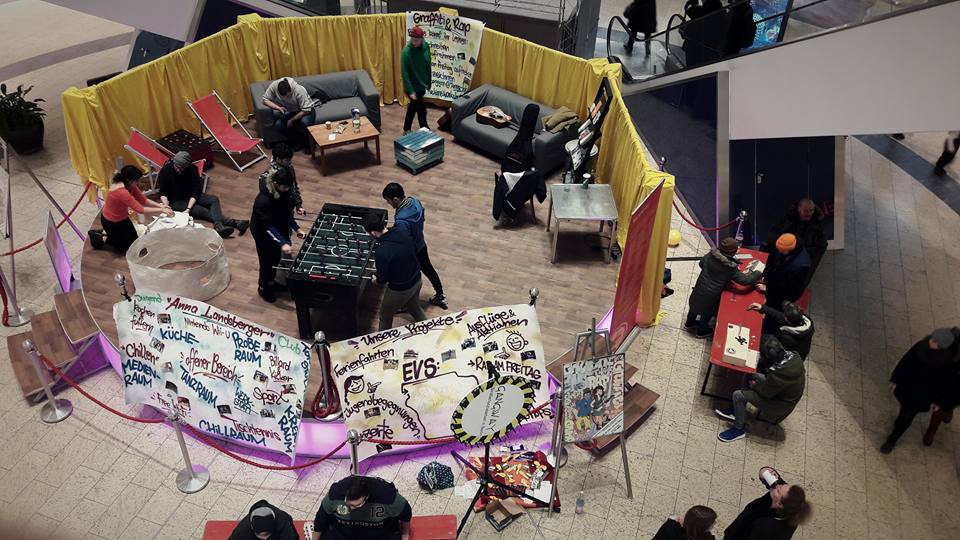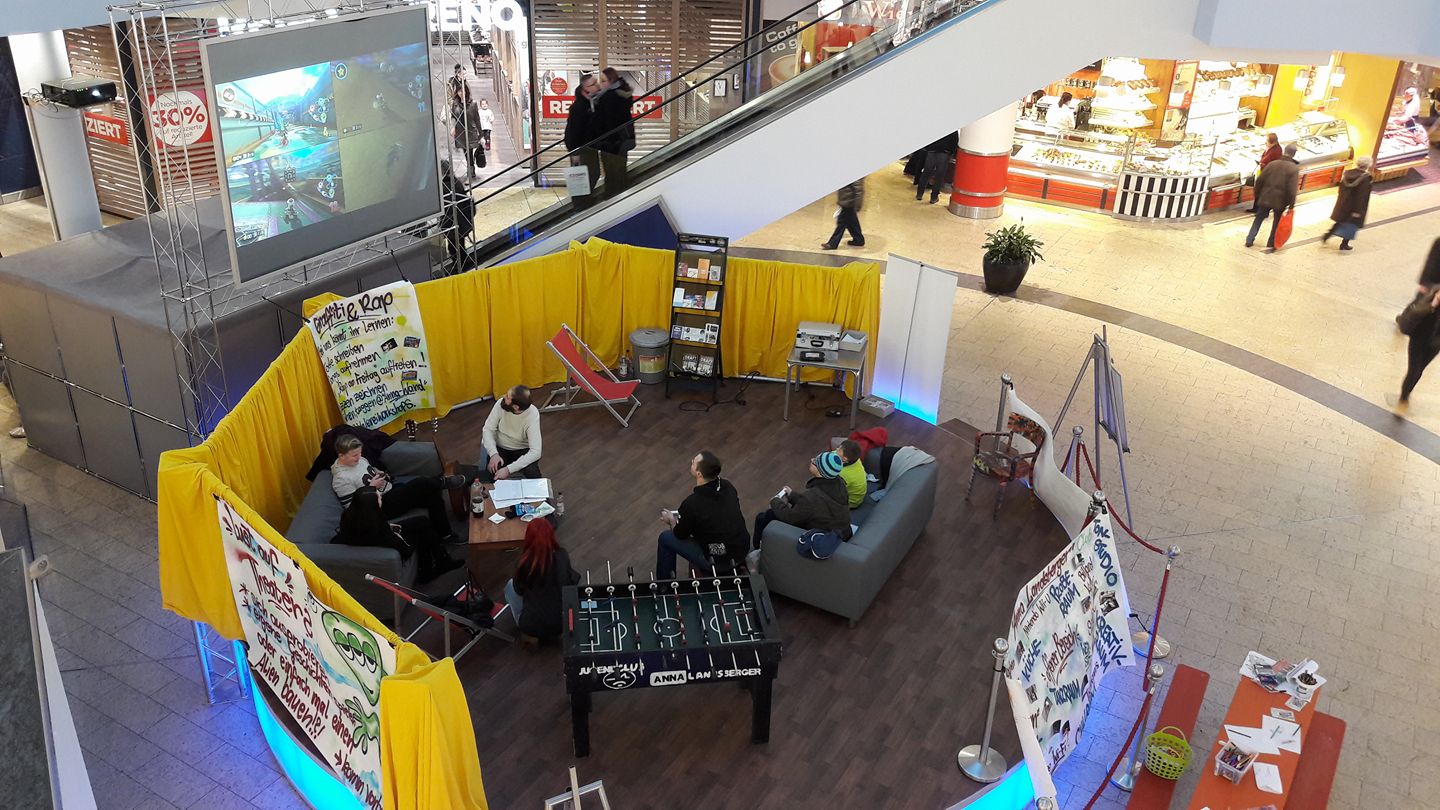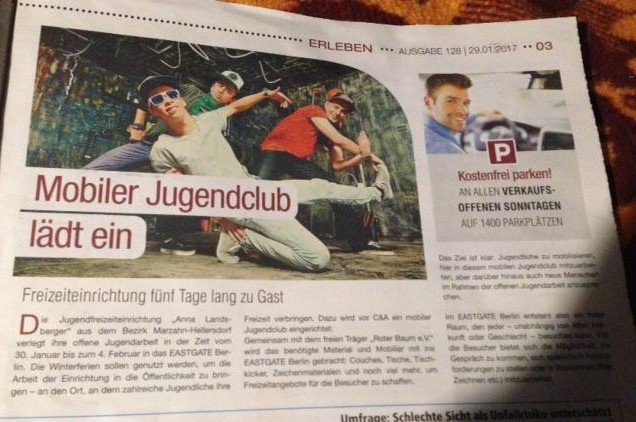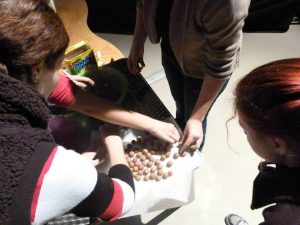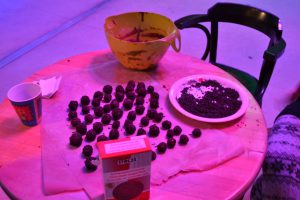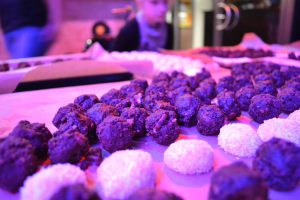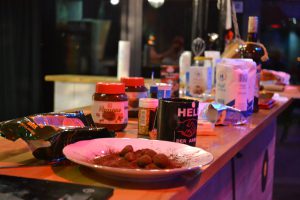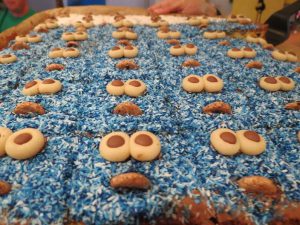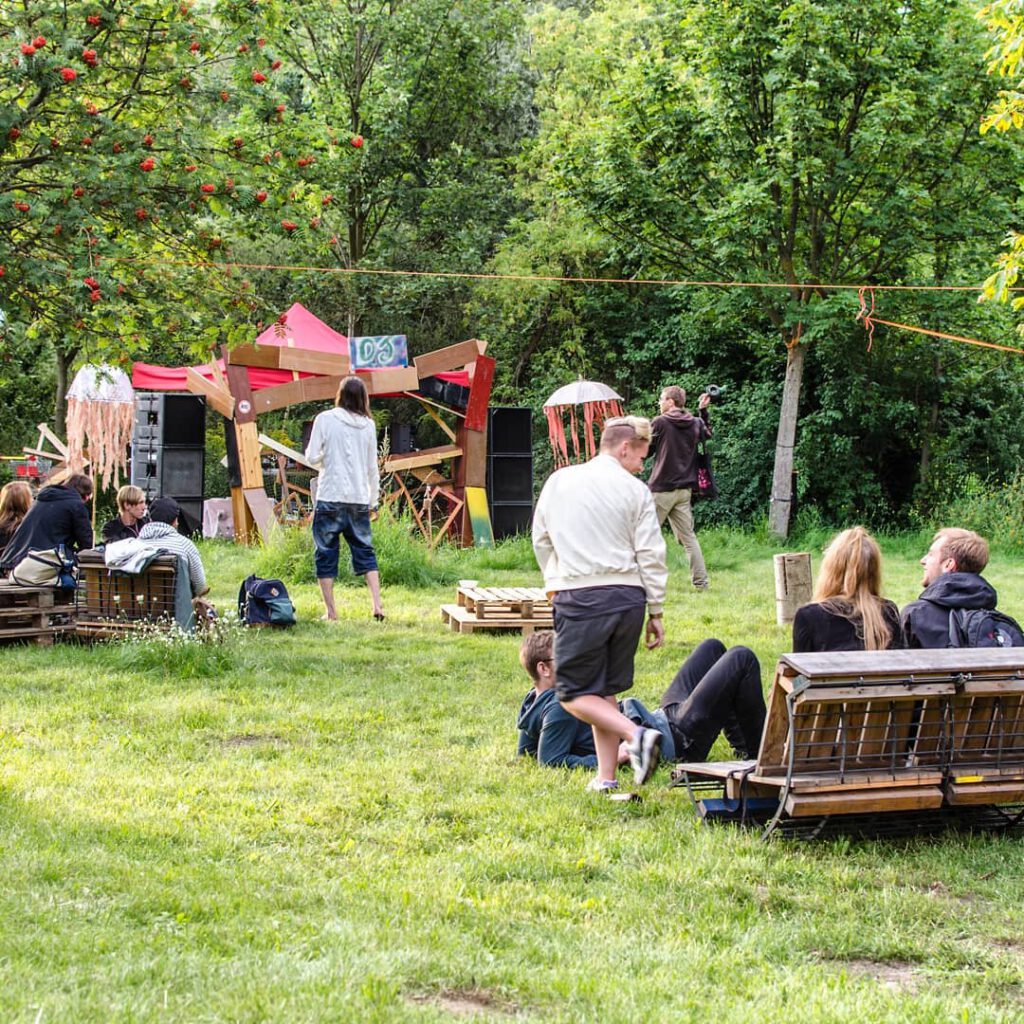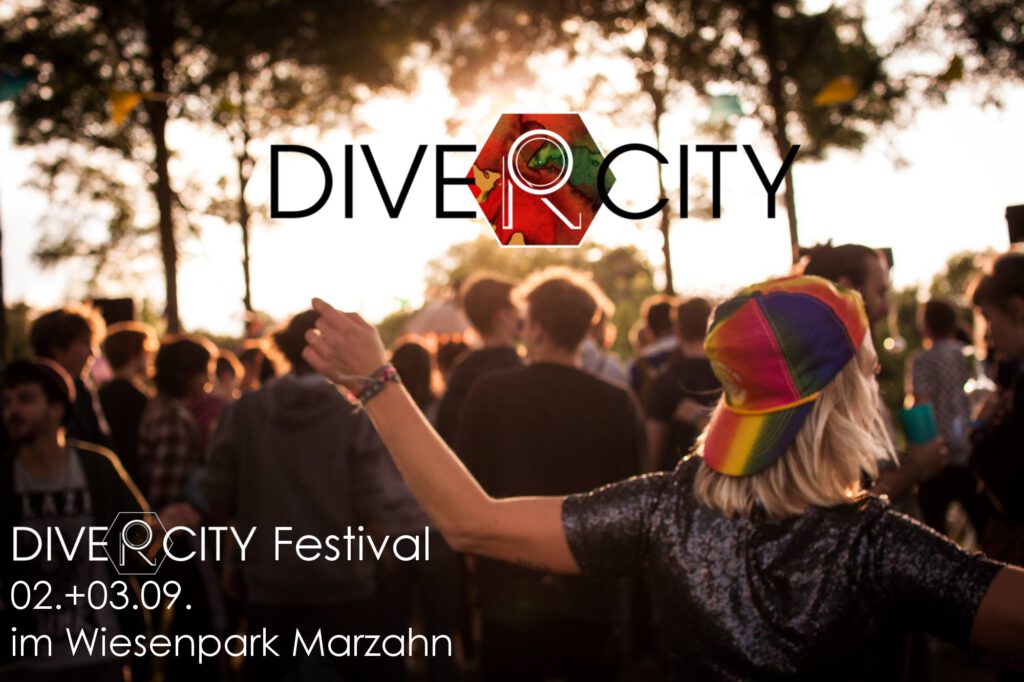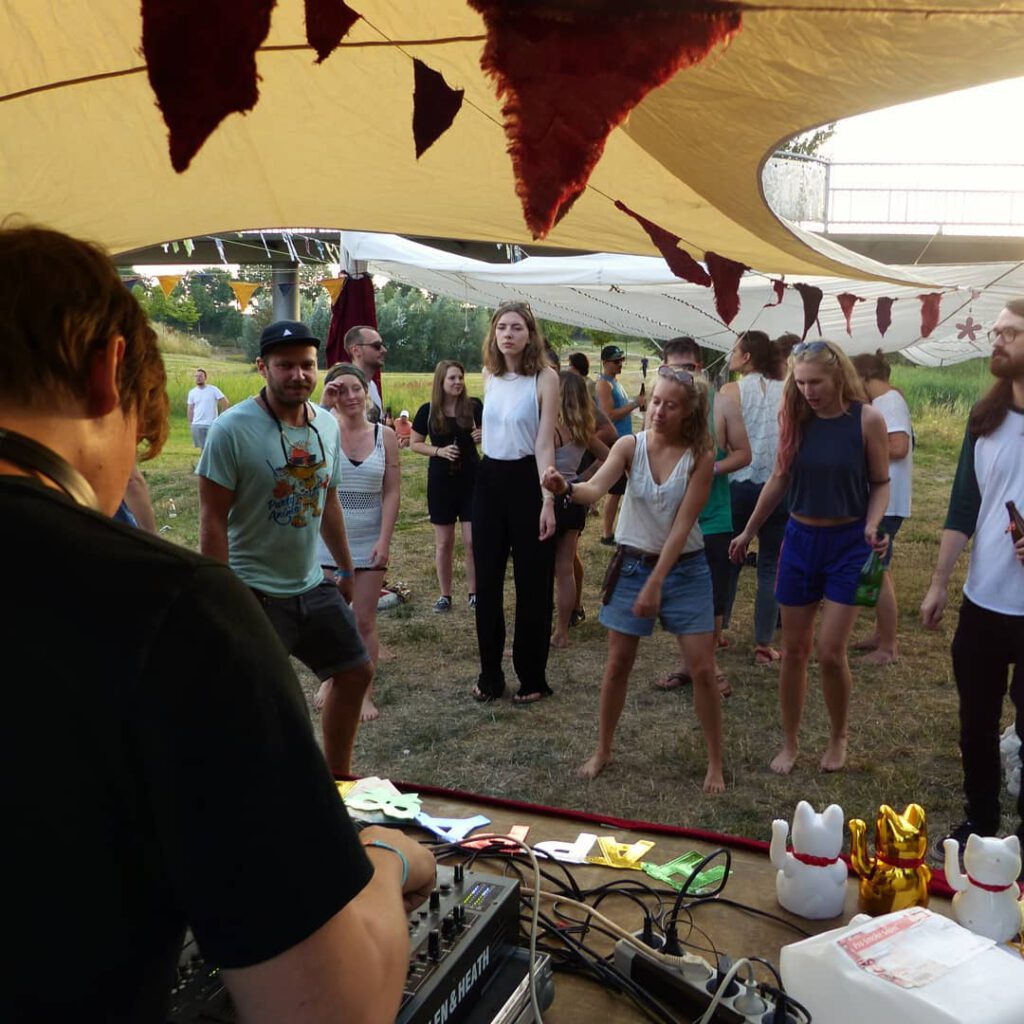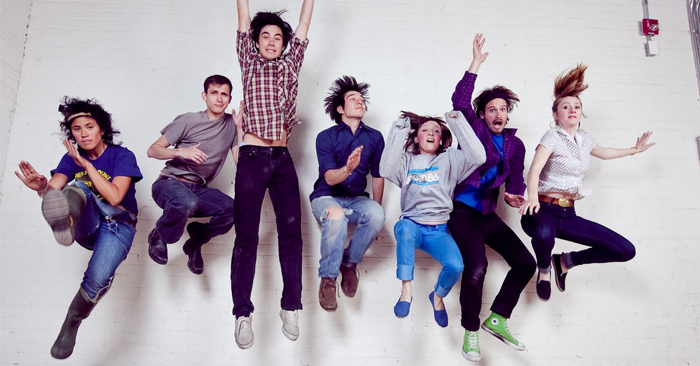
Here it will be found a sample of activities offered by youth centres all around Europe. These are exemples of either non-formal or informal activities.
EStonia
extreme workshop
Designer
Type of activity
Age and gender
Contextualization
Is it for an specific target group?
Preparation
Description
Evaluation
Was funded? By whom?
Youth worker testimonial
Youngster testimonials
Website
Rakvere Youth Centre
Non-formal.
10 to 26 years old. All genders.
There is a skatepark in the city where young people spend time all the time, but often they also do trouble there. They needed action.
The workshop is for young people aged 7-26 who are interested in extreme sports.
It would be useful to have someone who knows about extreme sports and would like to pass on their knowledge. A outdoor place where you can do extreme sport. It is important that the participants have a vehicle such as BMX, scooter, skateboard and a safety helmet.
Look for an extreme sports maker. Set up a training plan with him, how many young people, where, for how long and how many times. It would be good if the workshop series ended with a competition or something similar.
The implementation of the activities will change depending on the sport. It is generally important to make a general presentation with the facilitator to reassure the participants and talk about the sport that will take place.
Then make a short presentation of the participants to make them know and feel comfortable and start with an explanation of the sport.
Divide the participants into two groups to facilitate the workshop, one group will evaluate the results of the group that is doing the sport activities and then make a change, then the group that was doing the activity will now evaluate.
At the end of the activities there will be a short competition between the two teams.
The workshop will end with a short final evaluation of the day, where suggestions for the next time will be welcome.
We made feedback sheets for young people’s feedback. And from the youth center, the project is managed by the project manager of the youth center and, if necessary, by youth workers.
City government funds.
“We have young people at work who understand young people and young people trust us. The youth center has a fairly large budget, which allows for many different activities, workshops and trips.”
“Very cool! I’m definitely going to finish.”
“I like the teacher and the fact that he is young. I will definitely participate in competitions this year as well.”
germany
anna in exile
Designer
Type of activity
Age and gender
Contextualization
Is it for an specific target group?
Preparation
Description
Evaluation
Was funded? By whom?
Website
“Anna Landsberger” International Youth Centre – Roter Baum Berlin UG.
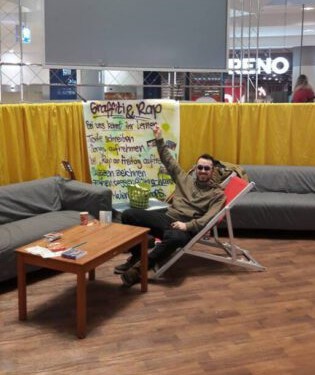
Informal
10 to 35 years old. All genders.
The starting point for this activity was the need of space in the youth centres for other activities. At the same time we wanted to attract new youngsters to the youth centre. After thinking about how to deal with this, we decided to open a temporary youth centre at the place where many young people are staying but are not accepted: a shopping centre.
The activity was designed to attract youth in age between 12 and 17 years. We tried to present all activities relevant for this target group and possible to do also in our youth centre.
The selection of any resource and material from the youth centre that is movable and available to be move away temporaly, such as: Football table, studio equipment, table tennis, creative material, music system, sofas, tables, chairs etc.
We arranged all items in an area in the shopping centre that was assigned to us. During the usual opening hours of our youth centre, we moved the entire operation of our centre to the shopping mall. The young people could chill out, play table tennis, table soccer or darts, made street art stencils, and also presented their skills at the microphone. The highlight was the consultation hour of the city council member for youth.
There was no evaluation done afterwards with the youngsters. But we found that this was a great activity, which brought us many new youngsters who are now permanent visitors of the youth centre.
No money was needed. The shopping centre gave the space for free. We used ressources and material we already had.
Christmas’ Kitchen
Designer
Type of activity
Age and gender
Contextualization
Is it for an specific target group?
Preparation
Description
Evaluation
Youth worker testimonial
Youngster testimonial
Youngster testimonial
Website
“Anna Landsberger” International Youth Centre – Roter Baum Berlin UG.
Informal
10 to 22 years old. All gender.
In Autumn of 2012 several of our female visitors, some of them having eating disorders, showed interest in baking and decorating bakery products like cupcakes and chocolate candies. They asked the social workers if they could do a workshop together in this field. The youngsters showed a great intrinsic motivation and searched for recipes, ingredients and tools on their own, with little help of the social workers.
The first chocolate candy workhop was established in December 2012 in cooperation with another youth centre called “Die Klinke” and mobile youth workers from “Outreach”. In 2019 they expanded the workshops by crafting edible gifts.
The activity was not prepared for any specific target group. The activity depends on the needs and wishes of the participants. If there are participants with special needs it is important to support and guide them which might need a higher number of youth workers for each workshop.
As already mentioned, it is important to ask the participants beforehand what they want and wish for in order to set a plan and structure of the workshop. Also ask them, when the workshop should happen. The workshop itself takes around 5 hours, because you should also count in the cooling time for the sweets or cupcakes.
Although, the goal is to let the participants work freely and independently, you should still check if they need assistance or support, e.g. for financial planning or time management.
Needed materials are recipes and included ingredients, tools and material to make chocolate candies or cupcakes, boxes or even gift boxes to transport the finished prdouct.
Also, make clear of they need to pay a small amount of money in order to participate or not. Justification could be, that they get a final product which they have to pay for.
Furthermore, it is recommended to test the reciped beforehand.
When buying the ingredients, the participants should also buy snacks and drinks for themselves, because making these candies can make them become hungry easily.
Clean the kitchen, fridge, counters and tools beforehand as well.
Most important step is to clean everything properly and make sure participants wash their hands.
When there are more than 4 participants, seperate them in groups. Each group is then supposed to make different recipes. Make sure, easy and more difficult recipes are split up on the groups equally.
Between steps, make sure to clean the counters or wash unused materials or tools.
Let the participants work independently, offer your help but don’t force it.
Finished products should be split on the participants equally. Put them in decorated boxes.
After the workshop it is important to ask the participants how they liked it and what they disliked. Ask them how the communication within the group was. Also, ask if they want to do another workshop or not. Evaluate the goup size compared to the number of social workers.
“It’s a great workshop for the weekend. The participants could craft selfmade gifts for their families and friends. The workshop allows a more direct approach to the youngsters, because of the smaller group. The workshop is non-formal and teaches the participants more about baking, physics and hygiene.”
“In my opinion, the workshop was very positive, because the atmosphere among the participants was harmonic. There was enough space for everyone to work and get involved. The workshop offered a rich variety of different recipes. All in all, I had a great time.” Josy, 18 years old
“I enjoyed the workshop and had a lot of fun. We were able to talk with one another more freely than usual. I liked, that we had small christmas gifts to take with us as a finished result.” Emy, 18 years old
PigGy Fund
Designer
Type of activity
Age and gender
Contextualization
Is it for an specific target group?
Preparation
Description
Evaluation
Youth worker testimonial
Website
“Anna Landsberger” International Youth Centre – Roter Baum Berlin UG.
Non-formal
13 to 27 years old. All genders.
The idea of the piggy bank was to give the youngsters a chance of collecting money in order to decide by own, what to do with it as a group. The idea was implemented in 2018 and since then, the youngsters collected enough money to go on a ski trip with us. The ski trip happened in February 2019 in Czech Republic. After that the youngsters decided to continue. This year, we will do a sommer vacation in Croatia in July.
No, every youngster who is interested in going on a vacation trip with us is welcomed to join.
The youngsters mainly collected money by doing BBQ stands or selling selfmade bakery products during events happening in the neighborhood. They needed to prepare the upcoming months to know, when events are going to happen in which they can participate.
First, we asked the youngsters if they are interested in doing a vacation trip with us. They agreed and sat together to discuss how to collect money for that. With the help of the youth workers they made a plan. They decided to sell food by baking cakes or doing BBQs for upcoming events. Besides that, they collected money by leaving their deposit bottles in the youth centre in order to bring them to the supermarket to get the refund.
For one bigger event in our neighborhood Marzahn-Hellersdorf they teamed up to help constructing and deconstructing the area of the event. For that they got a big donation from the organizers of that event.
We have a Facebook group in which we communicate with the youngsters on a daily basis. We ask them, what kind of activities they want to do as well as asking them, what they liked or dislikes about previous activities.
From 2018 to 2019 they reached their goal and thus were able to go on a ski trip to Czech Republic with the youth workers. After that, we asked them if they want to continue with the piggy bank, in which they all agreed on. This year, they once again collected enough money. The youngsters decided to do a sommer vacation this time in Croatia, which will take place in July 2020. Since 2018, the group of youngsters in our youth centre changed. But even the new visitors are very motivated and joined the project.
“Our youth centre is special, because the youth workers and the youngsters work in a big team. The youngsters are included in every decisions we make regarding the youth centre. We have regular meetings in which they can decide with us. Also, the youth workers are very passionate in creating a versatile content for the visitors of the youth centre. We try to keep them busy while learning in a nonformal way.”
Online – Make Up Workshop
Designer
Type of activity
Age and gender
Contextualization
Is it for an specific target group?
Preparation
Description
Evaluation
Website
“Anna Landsberger” International Youth Centre – Roter Baum Berlin UG.
Virtual informal.
From 14 years old. All genders.
The activity was carried out in order to have a wide range of activities for our youth centre “Anna Landsberger” also during the Corona pandemic. We wanted to offer different types of workshops online to make our activities as diverse as possible. In doing so, we also always made sure that the young people could interact with us.
No, the activity is not prepared for any kind of target group. Make up should be for everyone, without the focus on gender, age or other criteria.
In order to make a make up session, you will need a table and a mirror in front of you. Also, you will need a good lichting in the room, so the viewers can see your face proberly. Because it is supposed to be a live video via Instagram, you will have to record it with your phone. For the tools, you will need different kind of brushes, eyeshadow palletes, blushes, lipsticks and other.
1) Prepare the table and mirror. Put your make up tools in front of you on the table, so you have easy access to everything. As already mentioned, you will have to adjust the light as well. Find a spot or a tripod to place your phone in front of you.
2) Start a live video via Instagram. Make it as interactive as possible. You can ask the viewers which colors or products to use. Also, you can do make up challenges, like painting your face in a funny way or doing your make up without the mirrors. The viewers should always be included in decision making.
3) During the process, you can answer questions in the comments or give some advices, if viewers are asking for them. Also, you should always put in words, what your steps are so the viewers can follow you easily.
We have a Facebook group in which we communicate with the youngsters on a daily basis. We ask them, what kind of activities they want to do as well as asking them, what they liked or dislikes about previous activities.
Dive`R´city – Tauche ein in deine Stadt (dive your City)
Designer
Type of activity
Age and gender
Contextualization
Is it for an specific target group?
Preparation
Description
Evaluation
Was funded? By whom?
Youngster testimonial
Roter Baum Berlin UG through the project “Diver’R’city”.
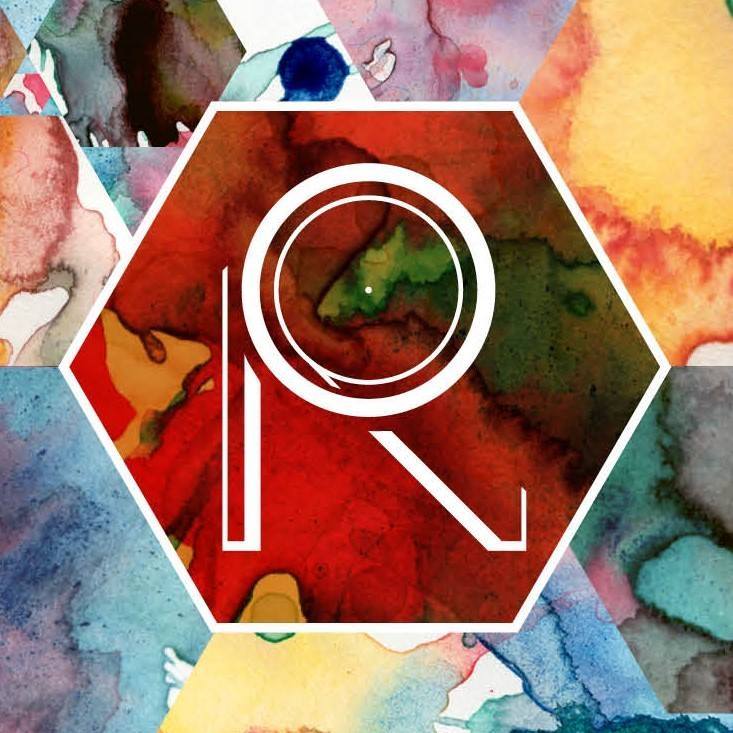
Non-formal.
15 to 27 years old. All genders.
Dive’R’city is a youth culture project of the social institution “Roter Baum Berlin”, which has been in existence for over ten years and enables young people to hold various open air events. The project was initiated by a holiday of our boss in Nizza, because he saw there how young people organized a youth culture event low-threshold and with little costs. The idea to implement this in Berlin was the foundation stone for the project.
The project aims to help young people to stand up for their interests and to live out their youth culture. Especially in big cities and in times of gentrification it is all the more important to support young people in standing up for their freedom and interests.
The focus here is on every young person who wants to take advantage of this offer. There are deliberately no differences, because the offer is aimed at every young person.
We support the young people in the run-up to their projects, help with the application for the respective location (application to the district green space office and public order office, as well as the environmental office), provide material (stage, music technology, toilets etc.) and funds for artists*innen & Co and help where we are brought. This happens in regular group meetings and a continuous group chat via social media channels. In addition, the respective event is advertised in advance on various channels and the respective immediate surroundings are informed. A constant contact between us employees and the participants is very important.
The day before the respective event, everything is prepared and invited together so that everything can run smoothly on the day of the event. On the day of the event, the respective participants* meet in the morning at the event location to unload and set up everything. During this process, as well as during the event period and the dismantling, there are assigned responsibilities. (Stage construction and dismantling, technical support, artist support, catering, decoration, loading and unloading, contact persons, setting up and clearing away rubbish bins, ashtrays and toilets, etc.) Constant contact between employees and participants is also important and indispensable in this process. It is also important that there is a main person in charge who has an overview of everything and is the contact person for all departments. This person works with a checklist that has been developed in advance to be able to keep an overview.
The evaluation of the respective event is first discussed among the employees and then evaluated together with the participants at a follow-up meeting. Here we discuss what went well, where there were complications and how these can be avoided at the next event. The wishes and needs of the participants are always taken into account.
For the team organizing the activity evaluation is done through an evaluation meeting after the activity, in which the preparations and implementation parts are discussed and evaluated, as well, the feedback from participants is discussed and moreover, based on the conclusions of the evaluation, further plans are made.
The project is financially supported by the Youth Democracy Fund and the Musicboard Berlin.
“It was a great idea to be part of the DiveRcity project to create my own event. I learned a lot of new things and was able to consolidate many more competences. I was supported and helped when necessary, but I was never restricted or ignored. The moment when the DiveRcity event you have planned finally starts and the long preparatory work and commitment finally pays off is unforgettable and not comparable. Along the way you get to know new people who share similar interests. With whom you can get together and work on further events. I would recommend everyone to visit a DiveRcity event once, because the vibe is simply made with heart and you can feel that.”
italy
tu ca talii ammia
Designer
Type of activity
Age and gender
Contextualization
Is it for an specific target group?
Preparation
Description
Evaluation
Was funded? By whom?
Youth worker testimonial
Youngster testimonial
Youngster testimonial
Palermo Youth Centre
Informal
18 to 35 years old. All genders.
The activity was implemented during a period of heated political confrontation in Italy on the immigration issue. The aim of this activity was to inform and sensitize the participants about inherent issues, trying to limit the instrumentalization of the media in order to reveal the real social problem.
No, every youngster is welcomed to join.
The first thing to prepare is the place where the short films have to be showed, so chairs and the projector. In addition its possible prepare some brochure with a brief description of each short film and a poster of the event.
After defining the details of the event with the exodos association, our partner in this activity, we produced a poster and several brochures to advertise the event inside the youth center, we prepared a post for facebook and instagram for visibility on social media. The cardholder verbally informed the members at the entrance of the organized event. When the day arrived, we prepared the sessions to welcome the participants and allow them to view the short film projected outside the villa trabia venue.
At the end of the screening, a debate started between the participants, the directon and the main actor regarding the topics covered by the short film.
Following the activity, the director and the main actor explained the reasons that had prompted them to shoot the short films, telling their emotions. This resulted in a debate on the topics dealt with which allowed participants to gain greater awareness on the issue of immigration thanks to the sharing of best practices. our staff inevitably participates in all our activities, thus becoming their topics of debate and daily conversation between us, allowing us to learn something new every day.
Yes, PYC and Exodus.
“The great peculiarity of our association is the aggregation that is created between the members with activities of all kinds, from taking care of the membership center itself to organizing cultural and environmental events, such as the cleaning of our second summer venue or the participation in events such as gay pride.” Chiara, 19, youth worker.
“I think cinema is the form of communication that manages to reach as many people as possible, managing to extrapolate the central point of a question so that it is easier to think about it. it was what the business was able to do, especially thanks to the presence of those who thought and made the short film.” Antonio, 25, university student.
“It was very moving. participating in this activity allowed me to see the issue from the point of view of the individual human being. know some realities behind the phenomenon of immigration, thanks to the participation of the director who told some anecdotes of the filming.” Sofia, 24.
migrantes
Designer
Type of activity
Age and gender
Contextualization
Is it for an specific target group?
Preparation
Description
Evaluation
Was funded? By whom?
Youth worker testimonial
Youngster testimonial
Youngster testimonial
Group of Sicilian students.
Informal
15 to 30 years old. All genders.
The activity was implemented in order to discuss young brain-drain and the reasons why a lot of students are forced to move to continue their studies. The idea is to imagine a different model for the development of the city which sees major participation of young people.
The activity was addressed to everybody, but especially to university students and immigrants because they are really damaged by the few opportunities and resources of the city and, very often forced to leave Sicily even if they would prefer to remain.
We invite guests, advertised the event through the creation of posts on our social media, rented an audio-conference system with microphones, prepared the workshop and prepared something to eat in order to offer dinner to the participants.
Structure of the activity:
– Introduction.
– Special guests speeches.
– Open discussion.
– Conclusions and entertaining.
After the introduction where the topic is presented, we all listen to our special guests’ speeches about brain-drain, immigration and the different opportunities for the city. Usually, we invited testimonials from social associations such as “ARCI”, “Mediterranea”, “Casa Nostra”, but a lot of other groups take part in the discussion. During the meeting both university students, immigrants and city workers compare and discuss their lifestyle and their everyday problems, but also their expectations about their future and hopes. So the workshop focuses on discussions and debates thanks to our participants and guests at the event. As a further contribution, during the debate, we usually show presentations, docufilms or introduce contents from articles or books. In the end, we use to join a multi-ethnic dinner with Sicilian Mediterranean dishes. Sometimes, there are young bands entertaining people with their music or young people doing demonstrations of street art.
I think is a very great opportunity for our city because we compare different kind of lifestyles and situations that are all linked to immigration and the obligation to move and leave the hometown.
Usually, the evaluation is an informal process based on direct feedback and colloquial of participants.
It was a self financed activity.
“Our youth centre is special because there, people can be themselves, express passions, spend time with friends, but above have the opportunity to make something great to improve the city.”
“This activity made me think about how different situations can be all linked by something and I was able to discuss with others and express my opinion.”
“I loved this activity! I had the opportunity to listen to a lot of people telling their stories and hopes, so I reflected on the meaning of my life and how I am blessed to find myself among them.”
Tandem di lingua straniera
Designer
Type of activity
Age and gender
Contextualization
Is it for an specific target group?
Preparation
Description
Evaluation
Was funded? By whom?
Youth worker testimonial
Youngster testimonial
Youngster testimonial
Website
Roberta Lanzalaco (Arci Strauss Youth Centre).
Non-formal.
12 to 17 years old. All genders.
In a context as small as our village, located in the centre of Sicily and not very connected, we felt the need to create an opportunity for our local young people, taking advantage of the presence of foreign host volunteers within our organization. The name of the activity is called Tandem because just like in tandem, you need more people to ride. So our aim is not only to allow our young people and the community to learn languages but also to allow our volunteers to learn something from our participants: language, culture, who we really are.
Tandem, was structured to have a non-formal approach designed by Strauss to deliver contents in English and Spanish but after a few months, new approaches were adopted spontaneously by volunteers who were talking other languages such as Arab, Russian or French. These new forms of tandem develop following an informal approach.
Originally, the activity was designed for young people between the ages of 12 and 17 to give them the opportunity to learn new languages such as English and Spanish. Later, given the success of our tandems, we decided to open for adults who want to learn a new language.
Our activity consists of learning English and Spanish using the methodology of non-formal education. It is an activity that can be done indoors (an activity room) or outdoors (a park). In order to prepare the workshop, it is important to decide the topic to be addressed during the workshop. After deciding the topic, we prepare the necessary materials for the lesson, using a computer and a projector or simply a flipchart and coloured paper to explain the topic, and extra tools (Dixit cards, goose play prepared by us, songs, exercises).
The activity should follow a workshop-style pattern. The workshop will begin with a brief presentation of the topic to be covered, but before starting, an energizer or icebreaker should be made to put participants at ease and help them to be proactive. After the energizer, which will last 5 minutes, the designated topic will be addressed, using a projector and a computer or simply a flipchart and usual stationery. We will discuss it together with the group with the help of examples and exercises. This will take about 15 minutes. After the explanatory part, where the topic and the rules are well presented, it will be time to start working in groups and have fun learning concepts and words of a language under a specific topic. We will then use some extra tools (dixit cards, our own goose game, storytelling dice) to put the topic into practice, it will take 30 minutes. At the end of the workshop, there will be a debriefing on the activities where feedback is always welcome.
Participants are young people and adults interested in learning languages, meet new people and get close to new cultures. The evaluation takes the form of an open discussion were elements of the learning process are presented in the group and there these are analysed and discussed, while once a month individual evaluations are operated by the youth workers responsible for the activity.
It’s a self-funded activity.
“Our Youth Centre is special because is a place were learning and having fun at the same time is possible. The learning paths are built modelling the working methods according to the needs and the specifics of the young people. There are no other places in our community were learning languages, having fun and meet new and interesting people is possible and is free of charge. To empower the sense of initiative and improving the group feeling, the Youth Centre is quite open to new ideas in a way that young people and volunteers could cooperate to design new activities, and these, when requested, will always receive the support of Strauss..”
“My experience was amazing! Thanks to Arci volunteers I’m able to speak fluently in English and Spanish. I remember when I went for the first time to a tandem. My English wasn’t great, but now I can manage to have a conversation. In every “lesson” I could always learn something interesting and new. As a matter of fact, tandem aren’t normal lesson, but I learn by talking with the volunteers and do activities or games with them. I didn’t just learn a language. I met new people from other parts of the world, that became my friends, and I was also able to know their culture and traditions. It was a journey made of fun, English, laughter and a lot of love.”
“I perfectly remember the first time I came to Arcistrauss: I wasn’t feeling comfortable when speaking English, but tandems turned out to be one of the best experiences I’ve made so far! My skills improved almost immediately but at the same time, I started to build strong connections and friendships that keep growing day by day. Months after my first approach at the Youth Centre, I worked together with a french volunteer who was speaking Arab and together with him we organized the first Tandem in Arab which saw the participation of many young people living in Mussomeli.”
Torregrotta Forum TV (TFT)
Designer
Type of activity
Age and gender
Contextualization
Is it for an specific target group?
Preparation
Description
Evaluation
Was funded? By whom?
Youth worker testimonial
Youngster testimonial
Website
Arci Centiopassi
Non-formal.
16 to 30 years old. All genders.
To fight cyberbullying phenomenon and to stimulate the active participation in the community life. This activity, in fact, aims to provide training and educational tools to build a direct awareness of the use, in terms of cultural and social emancipation, of web technologies.
The activity was prepared for residents in the town of Torregrotta.
The materials needed are mostly multimedial devices (equipment for writing, recording, editing and transmitting products, audio and video). There is a room used as recording studio. Formats must be created for a web tv.
First of all, in order to create such an activity, you need to create writing, recording and audio workshops to learn how to manage the web tv.
Once all this has been established, the activity takes place in the following way: you call a guest or someone who wants to talk to the listeners about a specific topic and you start to make a small presentation of the topic and then start a real interview. The whole thing will last for about an hour or so and within this interview or debate, there will be the insertion of music to make pauses between an interview and another. There may be one or more guests within the “episode”. Everything will end by thanking the listeners and our guests and giving the appointment for the next episode, in which we will anticipate who will be our guests and the topics covered. Finally, there will be the transmission of the formats created.
Participants are young people interested in the projects and in the learning of the understanding of the equipment and also in the community in which they live. The operators are prepared and capable of communicating their knowledge to the young participants.
The activity was funded by the Torregrotta municipality (comune di Torregrotta)
“The fact that I can freely express my thoughts in an artistic way and the fact that I can compare myself with others on how to see things.”
“TFT is a community Web TV self-managed by the Torrese community, making its places, its history, its contradictions in a context where the lack of aggregative spaces has often made the need for confrontation and interlocution dormant. So my experience with the activity is totally positive, because I felt free to express my ideas and I felt understood. I think it is a unique opportunity to be part of a new reality but with a lot of potential.”
romania
Big Tam Tam
Designer
Type of activity
Age and gender
Contextualization
Is it for an specific target group?
Preparation
Description
Evaluation
Was funded? By whom?
Youth worker testimonial
Brasov Youth Centre & Volunteer Centre
Non-formal.
14 to 24 years old. All genders.
Within the Brasov Youth Centre we are focusing on non formal education activities. “BIG TAM TAM” is a very good example of a sum of little projects (all the ideas coming from the youngsters) touching a wide range of interest areas/ topics in very simple/ basic ways.
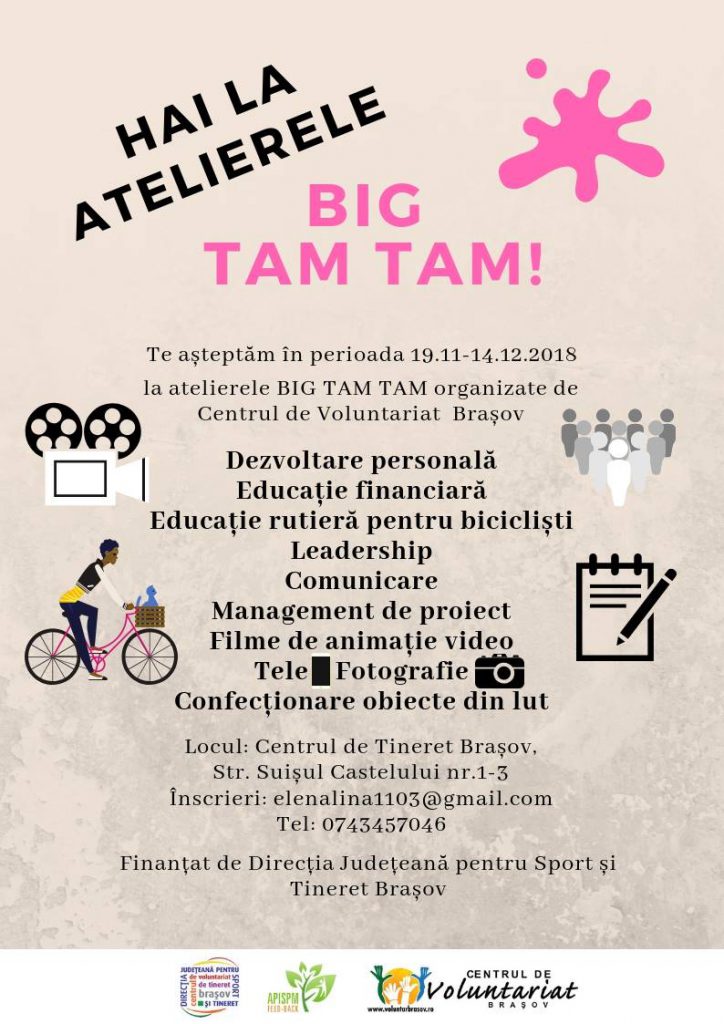
The activity is open to anyone coming to the Youth Centre, according to their interests/ likes.
BIG TAM TAM consists of various trainings and workshops. According to the topic, first we need a trainer/ facilitator and each person decides on the number of participants, needed materials and the room from the youth center he/she will use.
For example: Clay Houses Workshop – the facilitator is a South Korean living in Brasov, we decide with him about the lenght and frequency of the workshop. Let’s say 2 months, every Friday. He tells us how much clay does he needs and we buy it, and then he start preparing the workshop with videos for the participants, designs for the little houses, colors and so on.
1) Launch some topics for the trainings and workshop. Let the young people answer during one month, at the end of the month see the results, including topics that they are proposing.
2) Decide about 4-5 topics, no more and find the trainers or facilitators. Meet with them and establish with each the forseen learning outcomes.
3) Decide with each trainer/ facilitator about the number of participants, frequency of meetings, needed materials. Establish a schedule (4 or 5 days per week, each time other activity).
4) Launch the activity (social media, web page) and wait for people to subscribe.
5) Have a pilot phase. In our case we had the pilot 2 months at the end of 2018.
6) Start the workshops and trainings and adapt to the participants. 7) Meet once per month with the trainers/ facilitators for evaluations.
8) At the end of each training and workshop have an evaluation with the participants.
Big Tam Tam – pilot phase – November / December 2018 – Brasov Youth Centre – 4 meetings for each topic, 6 trainers/ facilitators, 10 persons/ group.
Topics: Personal Development, Financial Education, Leadership, Communication, Project Management, Road Education for Bicycle, Phone Photography, Video Animation, Clay Houses
Big Tam Tam 2019 – January/ December 2019 – Brasov Youth Centre – 6 trainers/ facilitators, aprox. 10 persons/ group.
Topics: Financial Education (4 meetings), Project Management (4 meetings), Phone Photography (4 meetings), Video Animation (12 meetings), Clay Houses (8 meetings), Conversational English (10 meetings).
With the participants – for each training/ workshop there is a 1 minute informal evaluation at the end of each session, then every time is needed in order for the trainer to adapt to the specific needs of the specific group and at the end of each training or workshop – a small project or task to fulfill and a formal evaluation, including one on the paper (multiple choice and open questions). With the trainers/ facilitators – every time is needed with each person, once per month with all (so we can adapt the schedules, needs in term of materials, make changes if needed) and in the end of each training or workshop we have a discussion with each person to know if we will continue with another group on the same topic or not.
DJST Brasov (Ministry of Youth and Sport)
“The idea of this activity was brought to my attention by the Volunteer Center members: they thought about an activity that has a loud name, drawing attention to the Youth Centre and with emphasis on showing youngsters what non formal education stands for. I think the activity was a success both in 2018 and 2019 and we will continue in 2020. We worked mainly with volunteer trainers / facilitators and with a lot of creativity within a small budget.” Catalina Tanase
Clothes Swap
Designer
Type of activity
Age and gender
Contextualization
Is it for an specific target group?
Preparation
Description
Evaluation
Was funded? By whom?
Youth worker testimonial
Youngster testimonial
Curba de Cultură Youth Centre
Non-formal.
15 to 35 years old.
The idea of such an activity came during an European Solidarity Corps project, but both young people and youth workers liked it and they used it several times, thus becoming a recurrent activity in our Youth Centre. In addition this activity not only provides the young people with a space for renewing their wardrobes without costs but also with a socializing space where they can share ideas and thoughts and receive advice and suggestions from their peers.
The activity is open for people between 15 to 35, but usually the age group that comes to it is 15-20 from the surrounding area (the villages around and the nearby town). Since the activities does not foresee any participation fee or special preparations for it, all young people are welcomed, including the ones with fewer opportunities and special needs.
For the activity there is a need for a space (heated up if it takes place in winter). The space needs to be arranged more or less like a clothes store, with tables, shelves and some rods and hangers on them. There is need for a table at the entrance for welcoming people and for receiving their clothes, that will be arranged on the shelves or hangers. And last but not least there is need for one or several fitting rooms with mirrors, as well as some mirrors in the main room.
The activity is meant to provide a space for young people to exchange clothes and to socialize, however some rules need to be set and announced in advance, such as the length of the activity, what kind of clothes can be exchanged and what conditions they need to fulfill in order to be accepted for the clothes swap, how many pieces of clothing the participants can bring and how many they can take home, what happens with the clothes that no one takes.
The system we used so far in this activity was with coupons. Each participant receives a coupon at the entrance just for attending the activity and for each piece of clothing they will receive another coupon. For example a person that comes with 2 pieces of clothing can leave with 3. This of course means that there are some clothes at the beginning (brought by the organizers, or from previous editions of this activity).
Other than that, the activity needs to be promoted in the local community, so people know when it happens, what are its benefits and what are the conditions to take part it or what are the conditions for the clothes to be accepted.
The steps to be followed in organizing the activity:
– book the space, get the furniture and materials needed and promote the activity.
– do the shopping (if possible, it is nice to provide snacks and some drinks for participants to encourage them to socialize) and prepare the materials such as coupons, signs, decorations, a notebook for feedback or some other evaluation form.
– in the day of the activity arrange the space, the clothes and receive the participants.
– after the activity, clean arrange back the space and take the clothes left to donate them or to recycle or what other plan was made for them.
For participants the evaluation is done with a short form or with a notebook/ post its where they can write how they felt, what they liked and what they did not.
For the team organizing the activity evaluation is done through an evaluation meeting after the activity, in which the preparations and implementation parts are discussed and evaluated, as well, the feedback from participants is discussed and moreover, based on the conclusions of the evaluation, further plans are made.
European Solidarity Corps programme through a Solidarity action, or from own resources of the organization.
“I think the clothes swap worked and appealed to young people because 1. the concept fits well in the general culture and atmosphere at Curba (DIY crafts and projects, trying to use and reuse materials, resources and ideas for different activities…) 2. it gave a great excuse for young people to gather, which I think aligns with the idea that Curba provides space and resources for people to meet, socialize and interact together in sometimes unexpected ways 3. it was meaningful (reuse/recycle instead of buying/throwing away) and fun at the same time.” Heloise
“It was fun. The atmosphere was very welcoming and chill, so we could chat, try clothes and to be goofy like me, when I was trying clothes and accessories.” Cozo
picnicafe
Designer
Type of activity
Age and gender
Contextualization
Is it for an specific target group?
Preparation
Description
Evaluation
Was funded? By whom?
Youth worker testimonial
Youngster testimonial
Youngster testimonial
Association for Development through Education, Informing and Support – D.E.I.S.
Informal
14 to 35 years old. All genders.
Our young volunteers made us aware of the few opportunities they have to talk about their emotions. Having attended another world cafe tackling similar themes as PicniCafe, they came up with the idea of organizing it at our youth centre. Also, discussing with other young people from the community we noticed that few young people are aware of the impact youth workers can have on their development and, generally, what is a youth worker.
Therefore, the goal of PicniCafe was to create a context for the emotional development of young people. Our objectives were:
1. Rising awareness about youth workers among young people.
2. Creating a context in which young people can talk about the problems they face.
3. Developing communication competencies for 2 members of our PR and communication team.
Our activity was prepared for all young people aged between 14 and 35 from Baia Mare or the county of Maramureșs.
Needed materials: markers, papers, snacks, hot drinks (coffee, tea), juices, water.
Human resources: 5 youth workers.
Special requirements: blankets and pillows.
Due to the fact that PicniCafe is a world cafe organized as a picnic, the activity takes place outdoors. Therefore, space needs to be cleaned of any garbage, the grass needs to be cut and the ground should be dry. A corner with snacks and drinks is also required. Also, for best results, it is advised that space be in a relatively quiet area with no intense traffic of loud noises nearby.
Before the day of the activity:
1. Choosing the 5 topics that will be discussed (ex: school problems, dreams for the future, etc.).
2. Preparing an efficient advertising campaign in social media to reach as many young people as possible.
3. Choosing 5 youth workers to facilitate the discussion.
4. Contacting the 5 youth workers and establishing the date and time of the activity.
5. Choosing 5 volunteers to assist the youth workers at the World Cafe.
6. Creating a Facebook event and starting the advertising campaign.
7. Keeping an eye on the weather forecast and thinking of alternative plans in case the weather is not favourable for the activity.
On the day of the activity:
8. Arranging the space with blankets and pillow and the snack/coffee corner.
9. Welcoming the participants and dividing them in an equal way on each topic.
10. Explaining the activity to all participants.
11. Discussions start at each blanket. The assisting volunteer takes notes while the youth worker facilitates the discussion. After 10 minutes each team goes on to the next topic. 5-minute breaks are taken every 20 minutes.
12. After all teams discussed all topics, a longer break is taken (10 – 15 minutes) while volunteers rearrange the space.
13. The assisting volunteers present the ideas and conclusions of the discussion at their blanket.
After the activity:
14. Youth workers discuss the conclusions.
15. Sharing the conclusions on social media and maybe taking the results into account when planning future youth activities.
During PicniCafe, participants were encouraged to leave anonymous feedback on colourful pieces of paper that our volunteers hung on the trees. Also, youth workers asked for direct feedback at the end of the activity.
After the activity, the team had a meeting dedicated to evaluating PicniCafe and for processing the learning experience of the volunteers.
Yes, by the Agency for Youth and Sport Maramures (representatives of the Romanian Ministry of Youth and Sport in the county of Maramures)
“One of the most important aspects of our youth centre is the fact that we involve young people as much as possible in every activity or decision. All the activities that take place in the youth centre are the result of the previous consultation with young people regarding their needs. Also, most of the activities and projects are designed and organized by young people, with the support of youth workers. To be more specific, we take care of the administrative aspects, we offer them the resources available, the general context and the counselling they need, and they have the freedom of designing and organizing the activity in whatever way they feel would best suit their needs. They take leadership positions and work in different teams, they learn from each other and we offer them support in their learning process after these experiences.
What we also consider important, especially because is something that young people coming to the youth centre have mentioned several times, is the fact that this a safe place where they feel like they can be themselves without being judged. This is a place where people agree to accept and understand each other, and a place where they learn to see beyond looks and behaviours.
Both of these elements met in the PicniCafe event.”
“I believe that PicniCafe is benefic for the young participants and generally Baia Mare. It was the first time I took part in an activity of this type and I feel that it helped me become a more open person and get used to talking to other people about my problems.” Mihai Riglea, 15
“I came to PicniCafe alone, with no expectations. I remember that the first topic we discussed was “future plans”. I had the opportunity to talk openly with people who were truly listening to what I had to say – not only the youth workers but other young people who finished high school or university. I was surprised by the diversity. There were high school students, but also university students and young people who started earning their living.” Raul Horgos, 17
serbia
Homework and studying club
Designer
Type of activity
Age and gender
Contextualitzation
Is it for an specific target group?
Preparation
Description
Evaluation
Was funded? By whom?
Youtube
Group for Childen and Youth “Indigo” (Serbia).
Non-formal.
10 to 18 years old. All genders.
Around 65% of Roma children in Serbia complete primary education. Roma children, to a large degree, do not speak Serbian at home, so their inclusion in the education and social system is even more difficult. Their parents often neither have the time nor the means and motivation to support their children’s education, although this is the only way out of the vicious circle of intergenerational transmission of poverty for this community. Roma children are often involved in child labour at an early age, thus losing the opportunity to obtain any education and break the poverty circle. A significant number of Roma children accompany their parents for seasonal work or to go abroad, which causes temporary or permanent drop-out from the education system. Roma girls younger than 18 are often married to boys chosen by their parents, which prevents them from continuing education. Thus, Roma children need a lot of additional support to continue education.
The activity was prepared for Roma and other marginalised children.
Since our main activity includes homework and studying assistance, our educators prepare the learning materials in accordance to the school curriculum of the children. In their work with the children they use the Internet on the computers in the Community Center, notebooks, pens, colouring pens, colouring books and different didactic materials and educational board games, available in the center.
The support is provided to the children in two groups, in line with the epidemiological situation and the instructions of the competent authorities. One group consists of the children from I to IV grade and another group consists of the children from V to VIII grade. The educator forms small studying groups, consisting of the children of the same or similar grades and assigns tasks to the volunteers. Some children sometimes work individually with a volunteer, in line with their needs. The focus is on achieving independence of the children in doing homework and studying, as the educators and volunteers work on developing their studying skills, researching skills, Internet and IT skills, etc. The peer support is also encouraged, so that the children develop a sense of solidarity and confidence.
Every Friday, in both groups, we organise workshops or other non-formal learning activities that are recreational and fully engage the children and volunteers in the choice of themes and preparation of the activity. These activities can be quizzes, lessons of Romani language held by the children for the volunteers, psychosocial workshops on the themes that are important for the development of the children, their emotional state, social and communication skills. These events can also be an opportunity for getting to know the children better, recognising their talents, interests and strengths, and further planning based on the participation of the children. Finally, this is an opportunity for the volunteers to get the practical experience of planning, implementing and assessing the effects of an activity with the children.
The main monitoring and evaluation tool is the progress the children achieved in school. We regularly obtain the information from the school, so that we can plan further interventions with the parents and school teachers. The volunteers are also involved, as they evaluate their personal and professional development due to the involvement in the programme by filling out the input and output questionnaires.
Yes, by the H. Stepic CEE Charity, Roma Education Fund and other donors.
https://www.facebook.com/GrupaZaDecuIMladeIndigo/
Slovenia
Me som Rom – I also have goals
Designer
Type of activity
Age and gender
Contextualization
Is it for an specific target group?
Preparation
Description
Evaluation
Was funded? By whom?
Youth worker testimonial
Youngster testimonial
Youngster testimonial
Youth centre Risko , RIS Non-formal.
15 to 20 years old. All genders.
In our region we have Roma people who are not employed and because of stereotypes and prejudices they are excluded from local society. During the youth project we implemented before we prepared Roma room for activities for all visitors, especially for young Roma people. In our activity we want to empower young Roma people to be more self-confident and show them how to make their own plan for the future life. Consequetnly they also become more include in local society.
This activity is focused for the Roma community, which is a special recognised minority group in Slovenia. They are treated equal, but still have some rights which they are using for their needs. The problem is that youngsters still don’t want to apply for high schools and university. With our non formal educational workshop we wanted to motivate them to join non formal educationl workshops in the future which could lead to applying to high school and university. With a better education they could get a better chance to get a better paid job, which would also lead to a better implemenation in local surrounding.
For this activity we need place, where Roma youngsters feel comfortable and for this reason we have choosen Roma room. This activity requires only paper and pencil for each participant.
Goals:
– to identify the things / topics that are important to them;
– questions that are important to them are expressed and shared with others;
– define personal goals for future achievement.
Each complete the sentences for themselves:
– The thing that really matters to me is …
– The thing that doesn’t matter to me right now, but I have to get it done is …
– The obstacle I want to overcome or the problem I want to solve is …
In groups of four, youngsters discuss the answers. They compare similarities and differences.
With the whole group, the youth worker shares strategies for effective problem solving. E.g.:
“Whenever I make a decision, I check the pros and cons of my choices again; I never make a decision when I’m angry / sad …”
Notes:
– Sharing personal strategies for coping with life situations can presents help and alternatives to others.
– Sharing among youngsters fosters a sense of value, belonging and develops confidence.
– The youth worker should encourage youngsters to reflect on their ability to help and accepthelp from others.
– Personal achievement and recognition by peers can have a significant impact to self-image and ultimately to future life choices, including those concerning risky behavior.
Questions to conclude:
– Did you like the activity?
– How did you feel during the activity?
– What did you find most interesting about the activity?
Together with participants we have created a circle where we have talked about their experience and their knowledge that they have achieved. We have talked about competences and about what they liked and what they didn’t like. Open talk was a really nice move to motivate them to share their opinion and to open up towards facilitators.
Facilitators have made their evaluation with a short meeting in our Cafe, to make it more relaxed and to share our new experience. It was important part of sharing our point of views and what should we improve in the next workshops.
Activity was funded by our own organisation RIS Mansion Rakican.
“Our youth centre is located in a beautiful mansion from 14th century which makes a unique location and for sure a uniqe youth centre. Our centre offers more different local, national and international programs for youngsters. We are especially proud of our Roma and family program, where different youngsters can meet, have workshops, can reach for help or just hang out.
Our youth workers have many different competences and experiences in the field of youth work. In last year we are also investing a lot of new education and time for our staff to get more experience with Roma youngsters.”
“My experience was nice, I was really shy in the begining, because I am very afraid of public speaking. The activities with short energizers and games have motivated me to keep trying and steping out of my comfort zone. I have learned how to achieve my goals and how to follow my dreams. I think that the fact that I am a Roma person, can not stop me to follow my dreams and to finish high school one day.” Valentino.
“I really liked the activities, because it motivated me to keep trying with learning for life. Because of good cooperation of local youth organisations I had an oportunity to join some international youth projects, but I have never learned english. After this activity I will try to achieve my goal to learn english and to be more active in next international youth projects.” Zlatko
AgriCooltur Youth Exchange
Designer
Type of activity
Age and gender
Contextualitzation
Is it for an specific target group?
Preparation
Description
Evaluation
Was funded? By whom?
Youth worker testimonial
Youngster testimonial
Website
Youth Centre Ormož
Non-formal.
18 to 29 years old. All genders.
We have chosen the main topic of youth exchange because all the participating organizations face similar challenges in their environment, for young unemployed to move to urban centers or abroad to find employment, but do not see an opportunity for self-employment at home, especially not in the field. agriculture and tourism. We also face the fact that young people view farming in a stereotypical way and do not recognize professional opportunities. The main goal of our AgiCooltur exchange: Today’s youth for sustainable agriculture of the future was to bring young people closer to modern farming trends, turning to a sustainable, sustainable, eco-friendly way of thinking and acting, while utilizing the latest technological and digital acquisitions both in agriculture and in business, promotion and marketing.
This exchange included 4 partners from Slovenia, Greece, Italy and the Czech Republic. Twenty-four young people aged 18 to 29 (20 young participants and 4 youth leaders) attended the exchange.It included young people facing economic barriers – most with student status but living at a financial minimum and without the support of their families at risk of poverty, some of them facing educational barriers as they repeat the year or pausing, some they are thinking about changing their study direction. Some of them face social barriers as they come from separate families, which has made it difficult for them to grow up emotionally and socially and gain independence. There was only one participant with health problems who had developed allergies and lactose and gluten intolerance. Geographic barriers have already been learned to deal with well, and despite the fact that some live in more remote places than geographical and urban centers, they have more skillfully arranged travel to the place of exchange.
—-
The applied project was fully implemented in accordance with the planned and approved application. In the exchange carried out with a preliminary preparatory visit (APV), all the planned objectives of the project were met. With the quality implementation of the exchange, which is the result of the effort and responsible work of all participating organizations, youth leaders, young participants, external collaborators and employees of the host organization, all planned goals were achieved. We brought young people closer to modern trends in farming, which turns to a sustainable, sustainable, ecological way of thinking and working, while using the latest technological and digital acquisitions in farming as well as in business, promotion and marketing. We acquainted young people with the latest trends in the fields of farming, agritourism and business planning, equip them with the necessary knowledge, skills, ideas and motivation to develop an individual business path in the domestic rural environment. Our educated young, external project collaborators who presented their successful business stories, e.g. graduate ethnologist and anthropologist – a block child who started successfully in herbalism, a civil engineer who breeds organic cattle, an oenologist who started producing beer in a wine-growing country, a farmer who became a vegetarian from meat production and one of the first in our place started with organic farming of vegetable production and processing, slavist who founded the institute and deals with cooking and mobile catering and other interesting and inspiring stories achieved their purpose, motivated and enthralled young people who began to think outside the box . They also received new knowledge from experts from the Faculty of Agriculture and Biosystem Sciences, which we visited and who prepared interactive lectures and workshops and passed on the latest expertise, information and trends in digital, technological and biosystem development.
They also learned how to prepare a good business plan for starting an agricultural activity, promoting a farm and selling products, so under the guidance and monitoring of an expert from a local business incubator, they prepared and presented 4 different but interesting and feasible business plans in four nationally mixed groups.
The goals and results of the project, the achieved learning outcomes and the effects of the project were measured by ongoing daily evaluations and by evaluations in the form of a questionnaire, which we did at the beginning and end of the youth exchange. Based on the analysis of the results, we also accepted the assessment that the project was successfully and qualitatively implemented. At the end of each day, the evaluation meeting was also held by the youth leaders, who regularly determined whether we were achieving the planned goals and results, and in accordance with the findings, planned the implementation and possible adjustments for the next day. After the exchange, we also asked the project partners for a feedback assessment of the success of the project implementation and partnership, who wrote down their performance assessments in an e-mail. All were extremely satisfied and gave the best marks from the participants, youth leaders and those responsible in the partner organizations. They said we exceeded their expectations. In the phase of dissemination of project results, we checked publications in the media and social networks, and thus also on the basis of media announcements, number of views, characters and shares of FB posts and views on Instagram profile, we measured and determined the success of the project.
This Youth excange is a Erasmus+ project funded by the European Union.
“The most important result, of course, is that the host organization conducted its first international youth exchange with a preliminary preparatory visit in our home environment, which brought us important experience. We strengthened youth international competences of employed youth workers and youth leaders, improved international project partnerships, confirmed and strengthened with new tests, improved project planning, coordination and organization skills, as well as leadership, international and intercultural teamwork. We also strengthened our local business partnerships with our external partners and raised the profile of our youth work in the wider local, regional and national levels through media announcements and dissemination of information in all project phases. All participants in the youth exchange as well as the public reached by our publications and information on the exchange have gained important information on the situation of modern farming, breaking down prejudices about the profession, work and life of farmers today. Participants, youth workers and youth leaders involved have acquired specific expertise in entrepreneurship, tourism and farming that will benefit them in their lives, as well as in the further work, counseling and guidance of young people in their youth work.”
“The youth exchange was a great experience for me. I met a lot of new friends from other countries. Learned how to make a business plan. Get to know local providers and the agricultural field.”
https://www.instagram.com/mcormoz/
https://www.facebook.com/mcormoz
Game night
Designer
Type of activity
Age and gender
Contextualitzation
Is it for an
specific target group?
Preparation
Description
Evaluation
Was funded? By whom?
Website
Youtube
MIKK Murska Sobota (Youth Centre, Slovenia).
Non-formal.
15 to 35 years old. All genders.
After conducting yearly surveys among youth, we have detected a need for a relaxed nonstructured activity with the focus on socialising and meeting new friends using board games, video games and table football.
The activity is intended to be fully inclusive, so there is no specific target group.
Needed materials depend on the focus of the activity. For basic use you need a few card game decks, a few board games and/or a table football. For the videogame part a gaming console and a projector or TV is recommended. It is also a bonus if a local game store/society is included in preparation, since they can carry part of the financial burden.
There are 3 types of activities:
-Board game night,
-Videogame night,
-Table football tournament.
Depending on your capabilities you can choose either of them or combine them for maximum effect. The underlying goal of the activities is to connect young people by using a medium of relatable and fun activities to induce a sense of belonging and a possible opportunity for further development.
All three activities also offer possibilites for development of certain skills and can promote entrepreneurship. For example: board game nights can inspire youngsters into creating their own board games, videogames can bring young people together, raise their competetive spirit and drive them to E-sports, which is becoming a big deal in the whole world, with potential for becoming a full time job. Table football is the least impactful of the trio, but it can allow for many opportunities for social gathering and can also be a competetive sport with amateur and even proffesional leagues and tournaments around the world. All these activities can include a wide variety of young people and with no need for athletic prowess.
The evaluation process with participants involves interviews and short questionaires about suitability of a certain activity and interest for further development.
Evaluation among staff relates mostly to the number of participants and summary of participants reactions.
Activity is funded by ourselves, MIKK Murska Sobota.
»Mladiborčani«
Designer
Type of activity
Age and gender
Contextualization
Is it for an specific target group?
Preparation
Description
Evaluation
Youth worker testimonial
Youngster testimonial
Youngster testimonial
Mestni Mladinski Svet Maribor (Youth Centre)
Non-formal.
15 to 30 years old. All genders.
Who are the “Mladiborčani”? These are young volunteers who care about Maribor and will therefore take matters into their own hands. “Mladiborčani” strive for changes in city.
In 2018, the Maribor City Youth Council launched the “Mladiborčani” project, which became the central volunteer project for young people in Maribor. Thus, in 2018 they carried out the first volunteer action on the Old Bridge – they cleaned it of rubbish, graffiti and remnants of stickers from the fence, removed weeds along the curbs and symbolically painted part of the fence of the Main Bridge.
With the desire for the sustainability of the project, we wanted to establish a base of young volunteers who will collect volunteer hours at various campaigns and will also be rewarded with symbolic sponsorship awards for their efforts. In this way, they became part of the “Mladiborčani” community, and their affiliation among young people have also been strengthened by receiving a membership card and a “Mladiborčan ‘sn” bracelet.
For the activity we need different materials. Our youth center offers many equipment for various workshops. With support of the government, different projects and our municipality we also buy material that is needed for the campaigns and events.
The project became permanent and was continued in the coming months with a number of campaigns around the city also in 2019 and 2020. At the same time, all young people who would like to help, public companies, as well as sponsors, are invited to participate so that the implementation of many campaigns can succeed also in the future. The main activity should be implemented by the idea of volunteers and staff, find a problem and a great name for the activity. Next step is to organise it, to make a plan and divide the work. Than start to promote the idea and the activity. Make a great team that will help you and realise the activity. What is left is just to pick a date and implement the activity in a specific place.
Day after the activity we meet at our youth center and we talk about the activity or the event. We maily speak how to improve future events and we also talk about all good things that happened during the activity, because we want to motivate our volunteers and workers to be better in our future activities.
“Our youth center is special because its like second home to our users. Our living room became like a second home for our volunteers and for our staff. It is also a nice center for meeting with friends and making a lot of workshops and spending some quality free time.”
“I am happy that I can visit youth house almost every day. Also I am very happy to be part of the team as a volunteer and help our town with some activities and events. The activity “Mladiborčani” was a great experience and also it contributed that many young people joined our project and also to our NGO as volunteers.”
“The activity brought me new connections and new friends, I am very happy that I was part of this experience. I hope that after this covid-19 we will be able to make new and more amazing projects!”
Various workshops and performances
Designer
Type of activity
Age and gender
Contextualization
Is it for an specific target group?
Preparation
Description
Evaluation
Was funded? By whom?
Youth worker testimonial
Youngster testimonial
Gornja Radgona Mladinski Youth Center
Non-formal.
16 to 30 years old. All genders.
We want to offer our visitors as many quality concerts, lectures, exhibitions, travel, film and social evenings, performances, workshops, music workshops, jam sessions, children’s performances etc.. We encourage creativity, activism and social criticism. We want our users not only to be consumers, but also to co-create program content with us. The youth center is a very important part of the extremely rich cultural events in Gornja Radgona, which is at a really enviable level. However, we must constantly consolidate and upgrade this role with hard work.
All our activities are prepared for everyone. Our aim is to connect all young people from the local environment and also on regional level. We want equality for everyone and one of our mains goals is also including people with fewer opportunities. We treat them equal as everyone else and we don’t take into account to much for them. We offer them to create activities with us and also we offer them extra help if they ask for it.
For each activity we need different materials. Our youth center offers many equipment for various workshops. With support of the government, different projects and our municipality we also buy needed materials for our activities. Our volunteers and youth will get required materials for free if it’s not to big activity.
We offer our help with our youth worker, who is working on preparing the activities with our volunteers and youth from Gornja Radgona and surroundings. Firstly we are having some meetings and brainstroming activites for getting new ideas for our acitivities. After meetings we are starting to realise the idea and we get all needed materials and we also make some online news about the event or activity. Mainly we are using our Facebook profile and our email addresses.
Day after the activity we meet at our youth center and we talk about the activity or the event. We maily speak how to improve future events and we also talk about all good things that happened during the activity, because we want to motivate our volunteers and workers to be better in our future activities.
Yes, by municipality of Gornja Radgona, various EU programmes, Ministry of Education, Science and Sport and also Ministry of culture.
“Our youth center is special because its different than the others by our events and activities. Our youth center is mainly visited by youngsters who like music and art. So its very artistic youth center, which gives us a very diverse point of view.”
“I am happy that I can visit Gornja Radgona youth center almost every day. Also I am very happy to be part of the team as a volunteers and help our small city with some activities and events. Despite that our city of the city of big fairs, its sadly also a city that youngsters usually leave after school. So we can create a better place for young people.”
